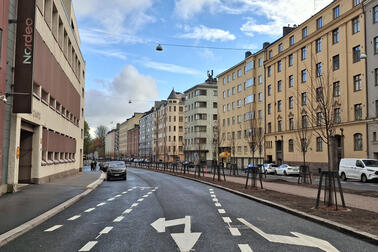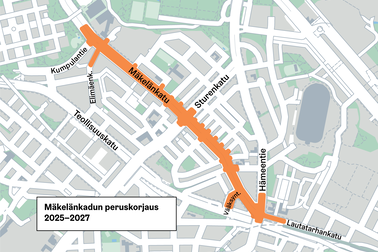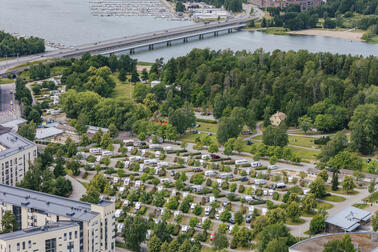Just a few moments ago, Oskari Kaupinmäki cycled from Kaisaniemi Park down to the Kaisantunneli underpass running under Helsinki Central Railway Station and emerged at the corner of the Sanomatalo building, at the start of the Baana pedestrian and cycling route.
“The underpass has shortened the distance between Hakaniemi and the city centre by almost a kilometre,” says Kaupinmäki, who works as the City of Helsinki's cycling coordinator.
The Kaisantunneli underpass, which facilitates cycling in the city centre, turned one year old in May. Reetta Putkonen also enjoys cycling.
“Cycling is a natural part of my everyday life. It is a very convenient and easy way of getting around the city, just like walking and public transport. My children have always travelled to school and hobbies independently,” says the City of Helsinki’s head of transport and street planning, contemplating her relationship to mobility.
Sustainable mobility is a topical issue, as the City of Helsinki wants to increase the modal shares of walking and cycling. At present, the modal share of cycling is 11%, but the City aims to increase it to 20% by 2030, which is also when Helsinki aims to achieve carbon neutrality. But how does Helsinki intend to make cycling more appealing?
Putkonen and Kaupinmäki are just the right people to answer this question. Putkonen is the head of the City’s Transport and Street Planning Unit, the responsibilities of which range from big-picture transport planning to the implementation of traffic arrangements on individual streets. Kaupinmäki is responsible for Helsinki’s Bicycle Action Plan at the city level.
Putkonen starts by saying that these days transport is always planned as a whole, covering walking, cycling, public transport, driving and logistics.
“The more people we convince to travel using their own muscles or by public transport, the smoother traffic becomes overall,” Putkonen says. By this, she means that if the number of cars on the roads decreases, driving and public transport services will become smoother and cycling and walking will become safer, for example.





